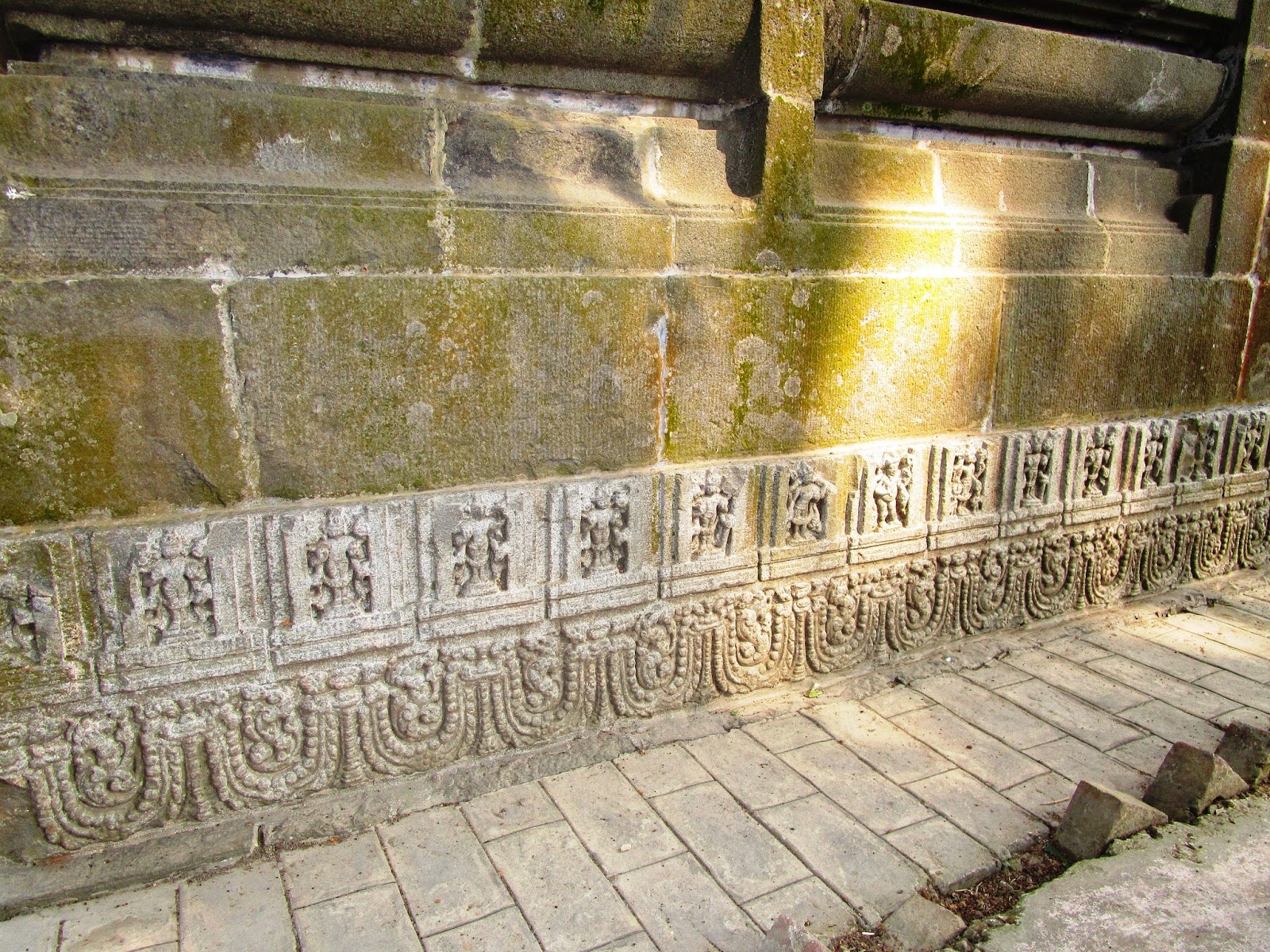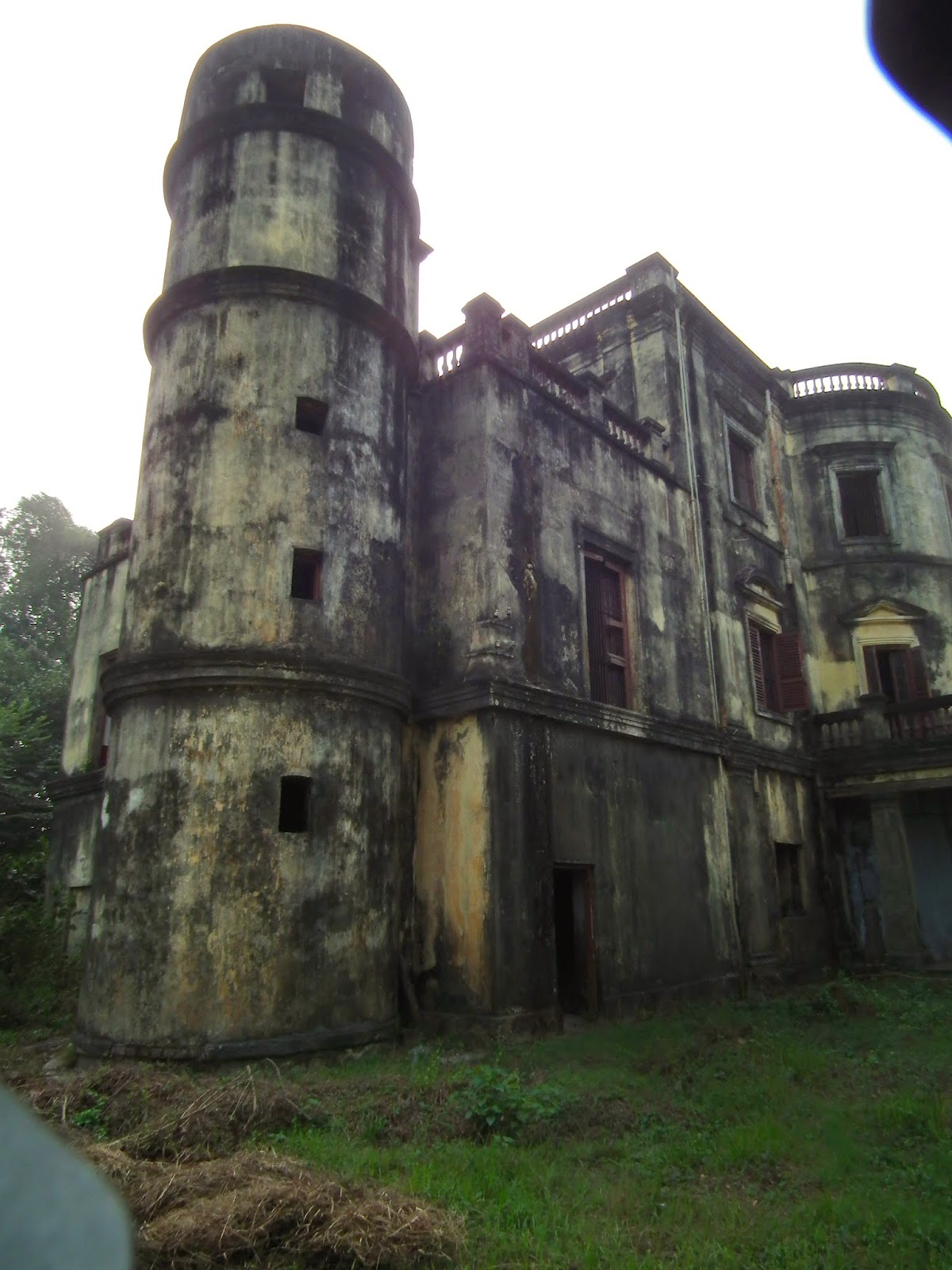According to Hindu mythology “Triveni Sangam” is the
confluence of three rivers and the point of flowing together is treated as sacred
place. Tribeni in Hoogly district in eastern Bengal is at the meeting of
Bhagirathi-Hoogly, Jamuna and Saraswati River. The name of the town derived
from the meeting of these three rivers. These three rivers are different from
the river of same name in North India and several streams of the same name in
the eastern Bengal.
Monuments in Tribeni which include Zafar Khan Gazi’s
mosque and tomb are considered to be the earliest surviving monuments of
Muslims in Bengal. Tribeni a small riverside village in the district of Hoogly,
was one of the earliest Muslim settlements in Bengal. From their base here, the
Muslims pressed inland and established control over a wide area between Burdwan
and Hoogly. The mosque of Zafar Khan Ghazi bears the Arabic chronogram 1298,
but several later inscriptions can also be found which suggest that the mosque
was remodeled over time, although the simple rectangular plan is probably
original.
The influential phase of Muslim architecture in
Bengal began in the later part of the 13 century in the newly
conquered regions of Tribeni, Chhoto Pandua and Satgaon in the District of
Hoogly. Tribeni, an important centre of Hindu culture was conquered by Zafar
Khan Gazi. Zafar Khan was the military commander of the region during the
governorship of Ruknuddin Kaikaus (A.D.1292-1302). The masjid, build in 1298 within
a century of Delhi Sultan Qutbuddin Aibak’s (of Qutb Minar fame) military
general Md. Bhaktiyar Khilji’a take over Bengal in 1204.
The Archaeological Survey of India has done a
fabulous job for rehabilitating what were once ruins. The tomb was probably
used as a Madrasa or Muslim centre for learning.The stone inscription in Arabic
calligraphy reads: (according to an inscription dated A.H.698/A.D. ) “ Zafar
Khan, the lion of lions, has appeared, by conquering the towns of India in
every expedition, and by restoring the decayed charitable institutions. And he
has destroyed the obdurate among infidels with his sword and spear, and
lavished the treasures of his wealth in (helping) the miserable.”
The Mosque of Zafar Khan Ghazi is the earliest known example of Mosque architecture in Bengal, and “ is certainly the oldest in Bengal”. Marking the earliest phase of Muslim building activities, it incorporates fragments of non-Muslim monuments. R.D.Banerjee is of opinion that “the mosque of Tribeni was most probably a Vaishnava temple.” Unmistakable Hindu workmanship is evident in the mutilated figures in some of the architectural fragments used a phenomenon to be observed in the Zafar Khan Mosque.
Joseph David Beglar wrote in his report for the
Archaeological Survey of India (1872-73) that the tomb had been built using
material taken from Hindu temples. “The temple….must have been of the style of
the beautiful and profusely temples… which are ornamented internally throughout
with scenes from the Ramayana and others.” The list of Ancient Monuments in
Bengal (1896) says of this building, “The building is oblong, containing two
nearly square chambers, each about 30 feet in length and breadth…there is no
doubt that many of the material are of Hindu workmanship, as numerous stones,
especially those which form the lintels and doorposts, are covered with
carvings representing living creatures.”
“There are five mihrabs in the qibla wall, the most striking being the central one. Tastefully carved multifoil brick arch of the central mihrab is supported by slender stone pillars of some Hindu temple. The predominant motif of terracotta art in the mihrab is an interwoven and swinging creeper imitated undoubtedly from the luxurious plant life of Bengal. The qibla wall is beautifully decorated by well-proportioned rectangular panels neatly carved with floral designs.”
“There are five mihrabs in the qibla wall, the most striking being the central one. Tastefully carved multifoil brick arch of the central mihrab is supported by slender stone pillars of some Hindu temple. The predominant motif of terracotta art in the mihrab is an interwoven and swinging creeper imitated undoubtedly from the luxurious plant life of Bengal. The qibla wall is beautifully decorated by well-proportioned rectangular panels neatly carved with floral designs.”
In some form or the other, this monument presents a
significant change from the stone post-and-lintel temples belonging to the
Pala-Senas to the brick dome-and-arch strictures which are favored by most of
the Bengali Muslim rulers. The bases and stone columns used here to provide
support to the sandstone and brick arches and domes are possibly reused from
temples.
A few yards to the east of the mosque, outside an
open country-yard, are two square rooms arrayed east-west adjacent to each
other. The western room holds two graves: Zafar Khan Ghazi, his wife and two
sons, while the eastern room exhibiting four graves placed on a masonry
platform, consists of Gazi’s third son and grandsons. The walls are constructed
by using old temple materials including rectangular stone pieces while the
rooms do not possess any roof. The western room’s northern door is constructed
by using Hindu frame as evident from the carved Hindu figures while the eastern
room exhibits sculptured scenes linked to the Mahabharata and Ramayana. Several
other stone sculptures are there, which are fixed at the other face of the
plinth.
It is surprising to notice that the structures
neither conform to a Muslim tomb nor a Hindu temple. It can thus be assumed
that the structure was constructed on a temporary plan by using reshuffled
temple materials. The unsettled form of occupation of the region by the Muslims
of the period adheres to this suggestion.
Sources:
1. “Pre-Mughal Mosques of Bengal” by M. M. Chakraborty. New Series, Vol.VI.
2. “Indo-Muslim Architecture in Bengal” by S.K. Saraswati. Vol. IX.1941.
3. “An Account of the temple of Triveni near Hughli” by D. Money.
4. “Indian Architecture (Islamic Period)” by P. Brown.
5. “Revised List of Ancient Monuments in Bengal” A.S.I.1987.
6. “Bengal District Gazetteer” Hooghly, L.S.S.O’Malley.
7. “ASI Bengal Report” 1888, by J.D. Beglar.
Research & Picture Courtesy - Santanu Roy.
Research & Picture Courtesy - Santanu Roy.






























